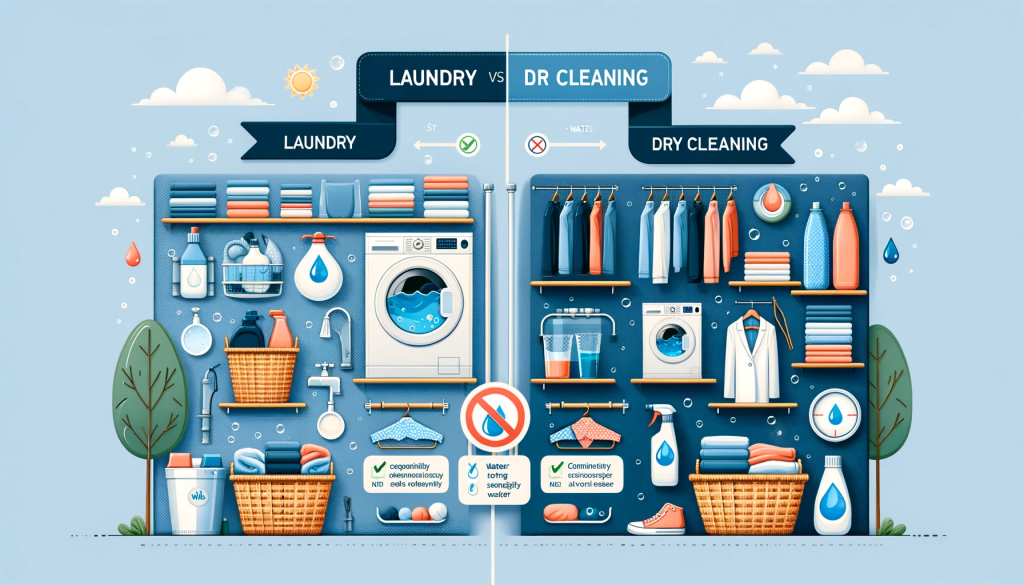
Introduction: When it comes to garment care, understanding the difference between laundry and dry cleaning is essential. Both methods are designed to clean clothes, but they use different processes suited for different types of fabrics and stains. In this article, we’ll delve into the key differences, focusing on solvents, water usage, fabric sensitivity, stain treatment, and garment care instructions.
Solvents in Dry Cleaning: Unlike traditional laundry, dry cleaning does not use water. Instead, it uses a solvent, typically a chemical called perchloroethylene (perc). This solvent is effective in removing oils and grease that water cannot, making it ideal for certain types of stains and delicate fabrics. The absence of water also means that fabrics that can shrink, bleed, or become damaged in water can safely be cleaned through dry cleaning.
Water Usage in Laundry: Conventional laundry relies on water mixed with detergents and other cleaning agents. This method is effective for general cleaning and is suitable for most everyday fabrics like cotton, polyester, and linen. Water helps to agitate the fabric, loosening dirt and stains, and is particularly effective against water-soluble stains like sweat and dirt.
Fabric Sensitivity: Fabric sensitivity is a crucial factor in deciding whether to launder or dry clean a garment. While most fabrics can withstand water and detergents, certain delicate materials like silk, wool, and some synthetic fibers may require the gentle treatment offered by dry cleaning. Dry cleaning prevents shrinkage, preserves the fabric’s texture and color, and avoids the rough agitation of a washing machine.
Stain Treatment: Different types of stains respond better to different cleaning methods. Water-based stains, such as those from coffee, tea, or grass, are typically best treated with laundry. On the other hand, oil-based stains like grease and certain food stains are more effectively removed with dry cleaning solvents. Understanding the nature of the stain is key to choosing the appropriate cleaning method.
Garment Care Instructions: The care label on clothing is your best guide in determining the suitable cleaning method. Manufacturers provide specific instructions based on the fabric type and construction of the garment. These instructions indicate whether a garment should be washed or dry cleaned, ensuring the longevity and appearance of your clothing.
Conclusion: The choice between laundry and dry cleaning depends on various factors, including the type of fabric, the nature of stains, and the care instructions provided by the garment manufacturer. While laundry is a more common and cost-effective method for everyday wear, dry cleaning is essential for preserving the quality of delicate and special-care fabrics.